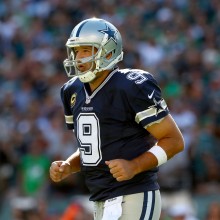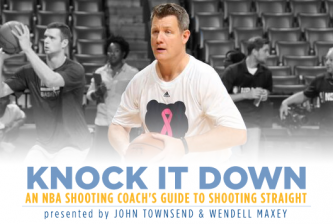Do you have a straight shooting arm?
That might be a weird question to randomly ask someone, but for basketball players the answer is actually part of the process in becoming a better shooter. But what does “straight shooting arm” mean and look like? And what are the steps to having a straight shooting arm?
These straight shooting arm training steps are perfect for young players who are learning how to play and develop as shooters and also for those players who may be looking to fix shooting flaws or even a reconstruction of their shot. Becoming a better shooter translates into becoming a better player. My hope is that those who go through these training steps will be able to reach that goal.
Using my shooting coach vocabulary, we previously talked about there being two different kinds of shooters: top of the head and side of the head, all depending on where players “lift” the basketball – either a player will lift the ball to the top of the head or they will lift the ball to the side of the head when getting into their shooting form.
It should be noted: these training steps are specifically focused on those players who lift the basketball to the side of their head.
These three simple yet effective steps will not only help players apply a straight shooting arm in their form with free throw, distance shooting or shooting on the move, but players will also be able to steadily see improvement in their shot and results thanks to a straight shooting arm…
1 – Hand In The Middle Of The Ball
Everything revolves around the basketball. Something as simple as where you place your hand on the ball will greatly impact your shooting results, and the best place for a shooter to place their hand is in the middle of the ball. When I am working with kids I will use the phrase, “knuckle over the nozzle”. This means placing the knuckle of your middle finger over the air nozzle in the middle of the basketball. For pros or those in the NBA, I will say “middle finger over Jerry West” and use the NBA logo to associate hand placement. Using certain wording over and over can mentally prepare the player to keep their hand in the middle of the ball, which as a shooting coach that’s what you want.
This is actually drawing a line in the sand, because coaches don’t typically teach this shooting style. Instead, they might teach “pointer finger” as opposed to middle finger. But through my experiences during my career working with young players, in the NBA D-League and NBA, having a player place their hand in the middle of the ball will help the player shoot the ball straight.
2 – Straight Shooting Wrist
If a player is having trouble with hand placement in the middle of the ball, it could be because of their wrist. Just because you place your hand in the middle of the ball does not mean your wrist is going to be straight.
My best example of this is my previous work with Patty Mills, now a guard with the San Antonio Spurs. When Patty and I worked together during our time with the Portland Trail Blazers, he had the habit of not getting his hand centered on the ball and finishing his shot off to the side when releasing the ball. I started tinkering with where he would put his hand on the ball and even put a strip of athletic tape on his wrist, starting at the index finger on his shooting hand and going over and past his wrist, up his forearm. With a black marker, I would then draw an arrow from his forearm down to that knuckle. The strongest part of your wrist is the outside, so it’s only normal that you would point your hand outward on your follow through. But showing him how to keep that wrist straight was awkward, but it proved to be effective in straightening out Patty’s wrist and shot.
The strongest part of your wrist is the outside, so when you are shooting a ball your focus after having your hand in the middle of the ball is to keep your wrist straight.
3 – Straight Shooting Arm
Before getting into your straight shooting arm, it’s important that the beginning of your shot starts with the ball outside of your body before getting into your shooting form.
Some players will place the ball or catch the ball in front of their body, but to have a straight shooting arm the ball needs to begin on your side or “outside of your body”. It may feel awkward or be difficult to do when starting, but once the player lifts the ball to the side of their head they are already aligned with a “straight” form.
When working with players, it’s important to use a point of reference for what is straight and inline with the hoop. If you go into a high school gym or a college gym where they do not have the painted lines for a defensive three second violation like NBA arenas, they always have a line in the middle of the floor for helpside defense. That line can be a great marking or a nail that is on a floorboard at the free throw line – something to help emphasize your point of lining up your arm with hoop versus centering your body toward the hoop. When this happens, your alignment is off and your shooting arm is not straight. The goal here is to have the ball outside of your body and your arm straight and inlign with the hoop, which will take positioning your body to the left if you are a right handed shooter or moving to the right if you shoot with your left hand.
Lately I started to use a “Shooting Tee” as I training tool. Much like a baseball tee, the stand allows players to work on form and repetition to help build the right fundamentals. Usually, I will spend a lot of time just handing a player a ball to help work and improve hand placement and the lift of their shot. In using the “Shooting Tee”, I’ve noticed the training aid is most beneficial in the first 25 shots with pros and closer to 100 shots for younger players. Once the player has applied a certain amount of shots with the “Shooting Tee”, that form should then carry over to where you can set a goal to reach without using the “Tee” while monitoring their straight shooting arm form.
Combined with your hand in the middle of the ball and a straight shooting wrist, keeping a straight shooting arm improves your form and makes you a better shooter from the free throw line, inside and outside or on the move through these three easy teaching points.
Read more from the Knock It Down archive























